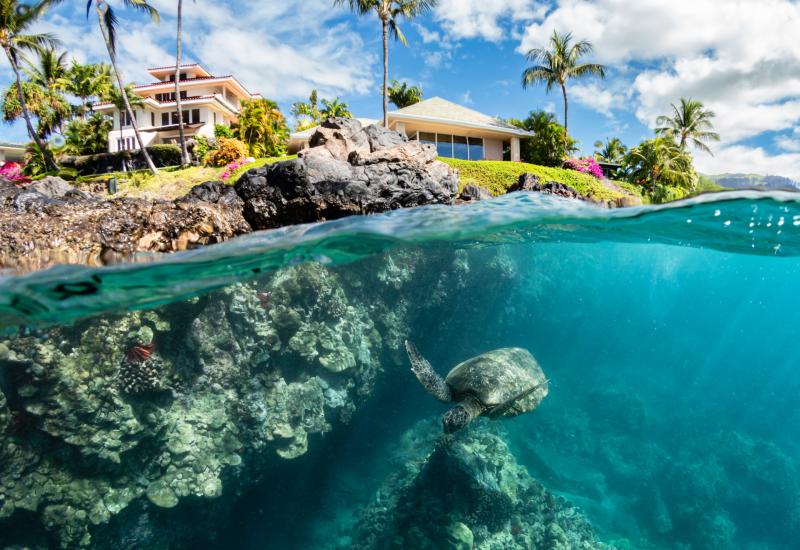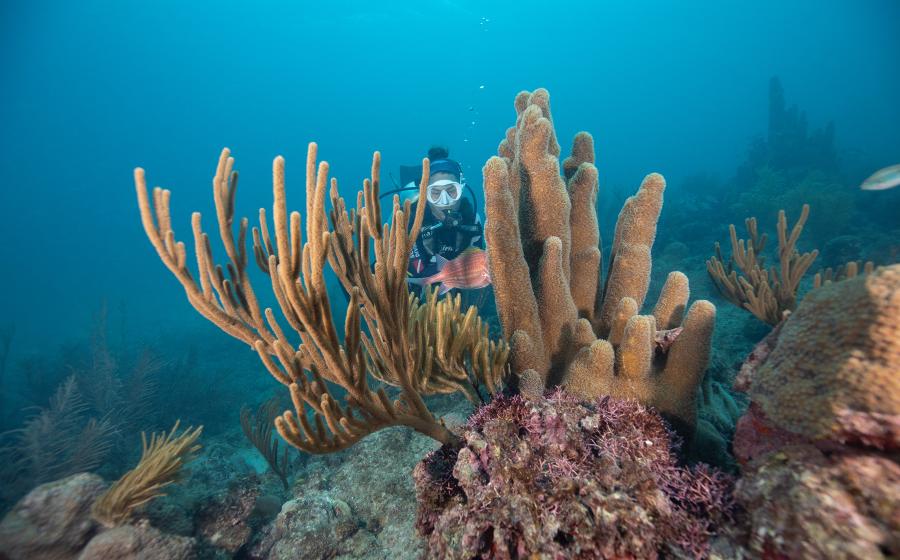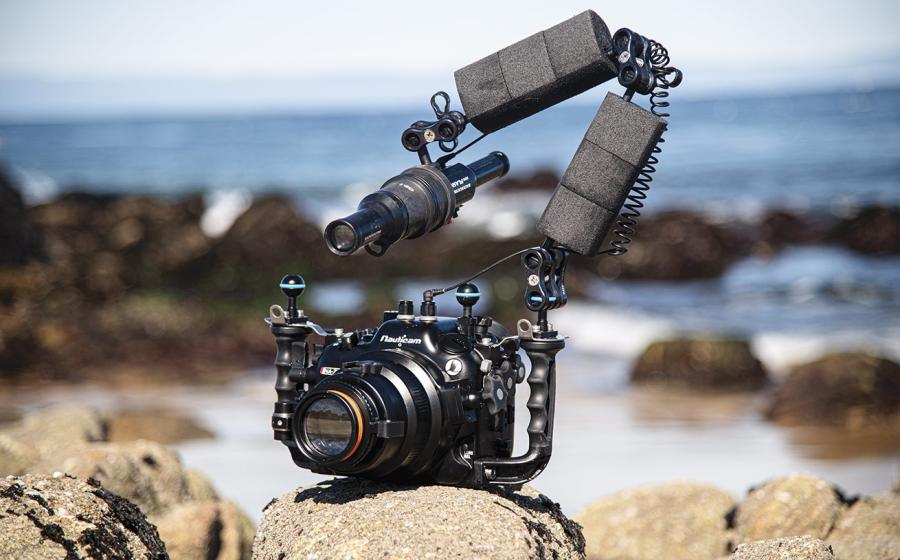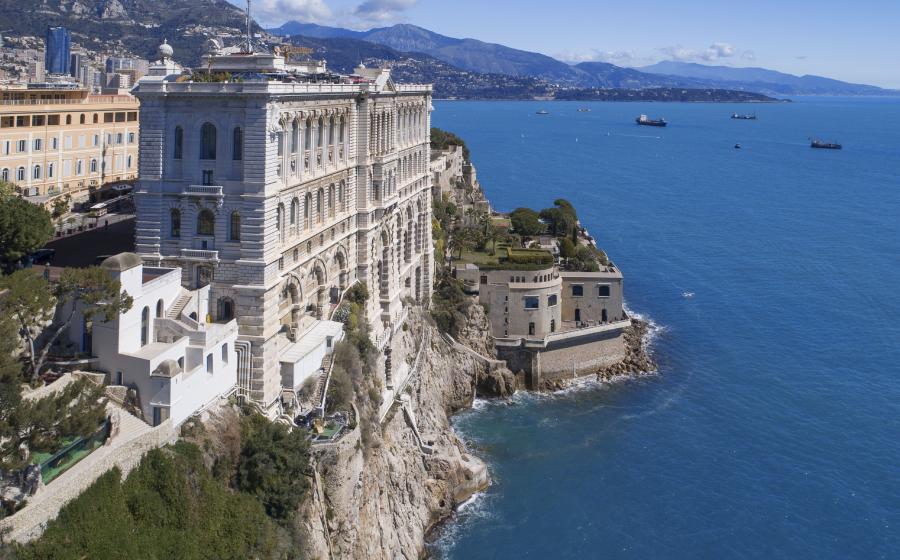Best Destinations for Shore Diving
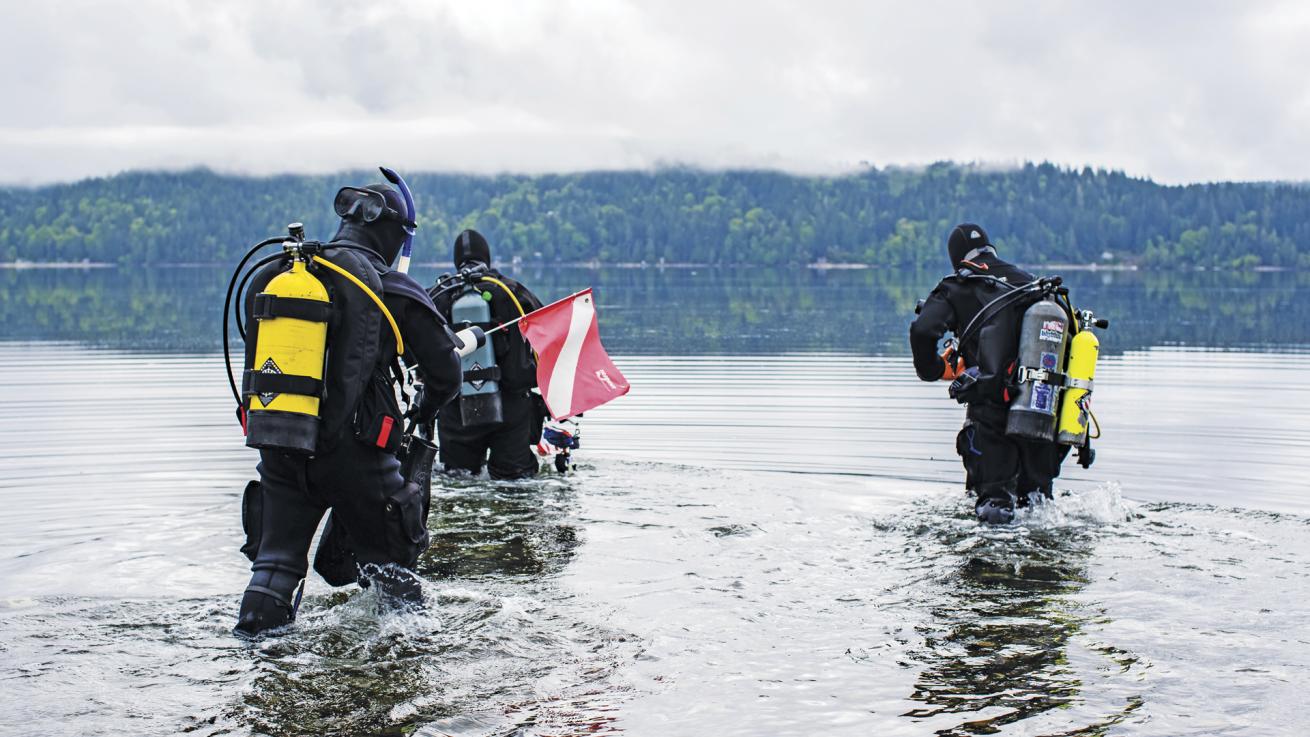
Lee MyronHood Canal's calm waters make for an exceptionally smooth shore entry.
Washington
Tidal changes in the Pacific Northwest are known to be massive, but that doesn’t mean every stretch of the area sees big flows. Yes, places such as the Tacoma Narrows funnel big volumes through small areas, making tide tables key for any diver seeking a diveable slack tide.
Then there’s Hood Canal.
“Hood Canal is wide open and straight,” says John Yackel, who co-owns the locally based YSS Dive with his wife, Katherine.
There is no fast-moving water. Wind brings waves at times, but a scout of the water or a call to the dive center informs you of the day’s conditions.
In this stretch, the most popular and perhaps most rewarding shore dive is the Sund Rock Conservation Area. It’s a smorgasbord of what you’d expect for Pacific Northwest diving, including wolf eels, giant Pacific octopus, giant plumose anemones and the occasional sixgill shark.
Sund Rock also has something that will surprise most Washington divers.
“We’ve got rockfish, which are endangered and absent from other places like Puget Sound, but are thriving here,” says Katherine Yackel. “People come up from a dive and say, ‘Oh my gosh, I haven’t seen these in years and years.’”
The area also stuns for its topography. Technically, Hood Canal is a fjord—a deep and narrow sea with steep land on three sides.
Because of the unique nature of the environment, YSS offers its own distinctive specialty: Fjord Diver. This course imparts best practices to dive the area, as well as how to identify a wolf eel den and a Pacific octopus. It also works as a general introduction to local diving, helping those new to the area gain comfort to best take advantage of all that Hood Canal has to offer.
Related Reading: How to Photograph Eels
Need To Know
When To Go October to March has the best visibility, bringing 30–50 feet. Summer’s algae blooms can create a thick layer, making it feel like a night dive below and limiting visibility to 20 feet.
Visibility 20 to 50 feet
Water Temps At depth, 46–50ºF in summer and 44 degrees in winter.
What To Bring A dive light for night dives and for added visibility during summer’s blooms.
Contact yssdive.com
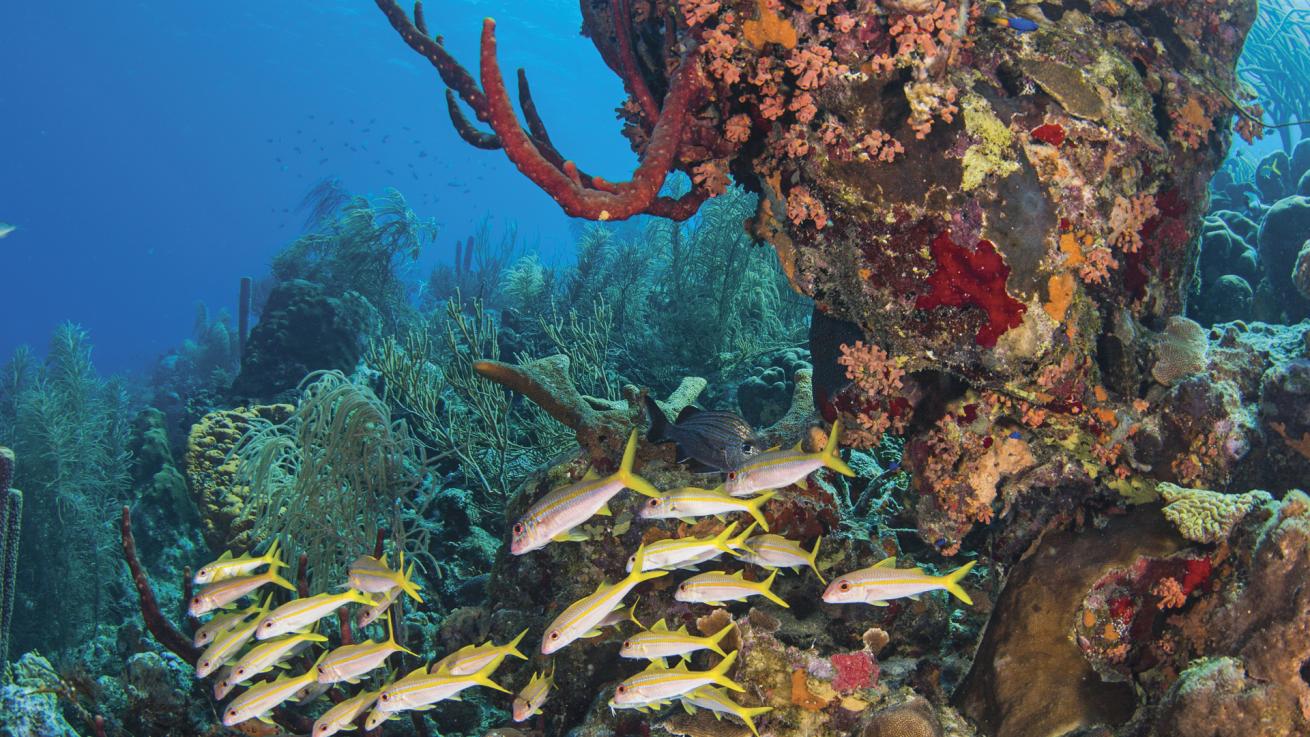
Bonaire's gentle slopes let you enjoy nearly limitless bottom time in its crystal-clear water.
Bonaire
Everything on Bonaire either naturally accommodates or has been built with shore diving in mind. From gentle sloping entry points, clearly marked with yellow, numbered stones, to drive-through tank-swapping stations, Bonaire is dialed in for easy diving that starts from the beaches and coastline.
That said, divers who like a challenge need only trek to the windward, eastern side of the island. There, sites often demand a rougher entry through surf but the rewards are bigger. Literally.
Eagle rays, the occasional manta ray and loads of big turtles are all out east.
At Turtle City, the sheer number of turtles is staggering.
“There are so many turtles everywhere you look—and they are massive,” says Annemarijn van Kesteren, dive shop manager at Scuba Do, located at Chogogo Dive & Beach Resort.
Scuba Do offers half-day trips to the east side, giving divers the chance to experience these sites alongside a guide who knows the best entry points and site routes.
Divers who want to simply relax and take advantage of Bonaire’s leeward side have their pick of more than 60 protected sites, including van Kesteren’s favorite, Angel City.
She favors the site for its double reef system, with a sand channel running between. In some places, the reef and rock rise as high as a car.
“You feel so small,” she says of the contrast.
Like most of Bonaire, the site has reef starting in 20 feet of water, allowing for shallow profiles and thus nearly limitless bottom times.
“If you are good on air, you can take a long time in the water and just cruise,” she says.
Related Reading: Best Destinations for Advanced Diving
Need To Know
When To Go Year-round
Visibility 60–100 feet
Water Temps 79–84ºF
What To Bring Invest in a reusable tank light if you plan on night diving. But leave the chem light and gloves at home, as neither are allowed on Bonaire.
Contact scubadobonaire.com
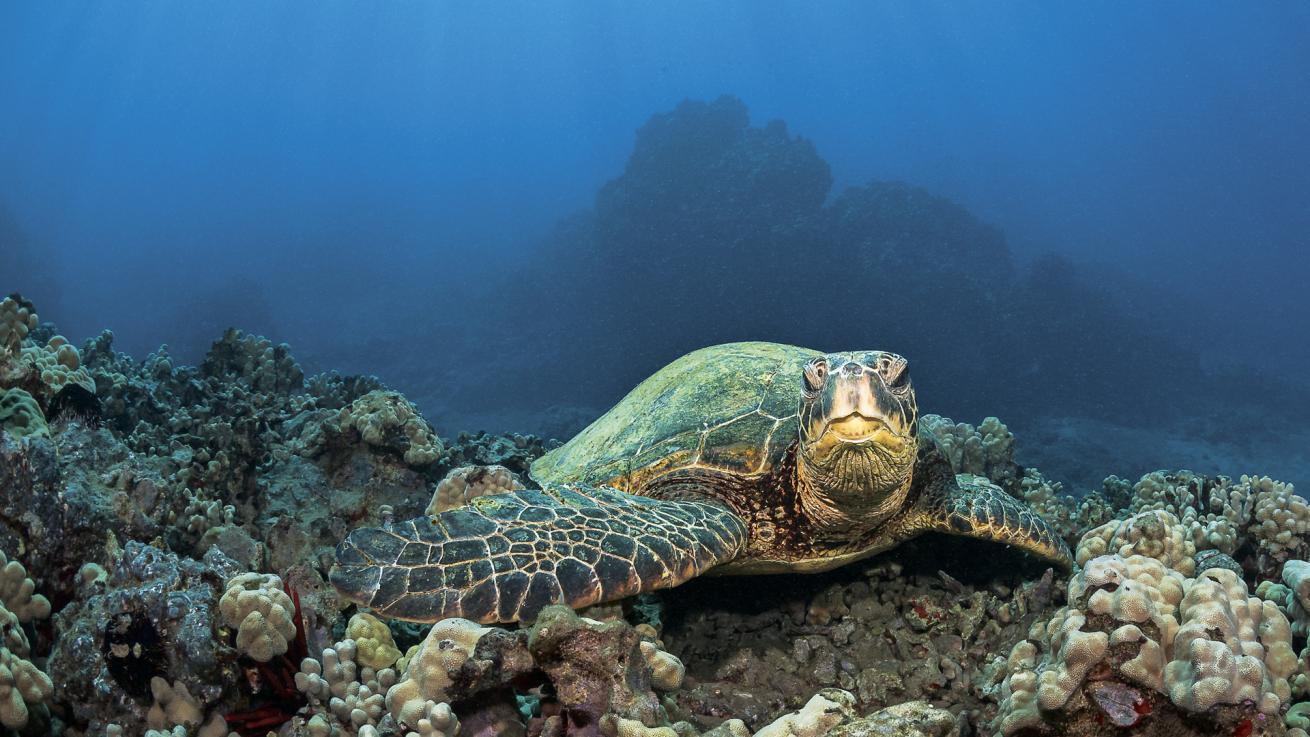
Jennifer PennerGreen sea turtles, or honu, are on most diver's must-see list. Fortunately, they're so common in Hawaii, sightings are almost guaranteed.
Hawaii
If you think boat diving is easier than shore diving, let Kauai’s Koloa Landing change your mind.
For starters, the entry point is a former boat ramp with a gentle angle into the water, where the conditions are flat and calm with no breaking waves.
Instead, says Jeannette Auber, owner of Fathom Five dive center, “It’s just like a bathtub when you walk in.”
Then the dive begins.
“As soon as you’re in water deep enough to put your fins on, there’s the reef,” she says.
From here, it’s a gentle exploration, with sightings ranging from tiger morays to Hawaiian swimming crabs with their black-and-blue striped eyes. And, of course, green turtles are incredibly common.
“Nudi nerds,” as Auber calls them, will geek out on the variety of nudibranchs, including blue dragon, Danielle’s and Gold Lace varieties.
Those watching the wider stage can encounter a bait ball of bigeye scad.
“When they start moving really fast in one direction, get ready,” she says.
This means an eagle ray, shark or some other big animal is about to push past.
On the north end of the island, best experienced from April to September, several shore dives offer the chance to see lava formations. Given that most dive operators are based on the south coast in the town of Poipu, the boat ride to this area is simply too far. It can only be experienced by shore divers.
Tunnels is Auber’s favorite for its lightfilled caverns that divers can swim in and out of.
“It’s magical,” she says.
It’s just one more reason she favors shore diving over boat diving. On Kauai, it opens up the list of available sites, for starters, and it removes a lot of the limitations inherent to boat diving. With shore diving, there’s no need to stop your dive at a certain time to stick to the boat’s group schedule. Instead, stay down as long as your gas supply and dive computer permit.
“A lot of times people think that a shore dive is compromising the quality of the dive, but that is not the case at all with Kauai shore diving,” says Auber.
Need To Know
When To Go Year-round, but if you want to dive the north coast, visit April to September. In winter, humpbacks visit and can be heard during a dive.
Visibility 60–80 feet
Water Temps 72ºF in the winter and 86ºF in the summer.
What To Bring A hooded vest to increase your protection.
Contact fathomfive.com
Readers Choice Awards 2024
This year we surveyed 13,322 readers on their favorite destinations, resorts, operators and liveaboards, awarding their top picks across a variety of categories. Our Readers Choice travel feature highlights the first-place destinations in each global region and offers a taste of what makes each a reader favorite. See all winners at scubadiving.com/readerschoice.
Readers Picks
Each operator, resort and liveaboard below won a Readers Choice award in our 2024 survey.
Bonaire
Resorts
Buddy Dive Resort
Divi Resort
Plaza Resort
Operators
Buddy Dive
Dive Friends Bonaire
Divi Dive Bonaire
Toucan Divers at Plaza Resort
Hawaii
Operators
Aaron’s Dive Shop, Oahu
Big Island Divers, Kailua-Kona
Dive Oahu
Jack’s Diving Locker, Kailua-Kona
Kona Diving Company
Kona Honu Divers
Lahaina Divers, Maui
Maui Dreams Dive Co
Seasport Divers, Kauai
Waikiki Diving Center, Oahu

